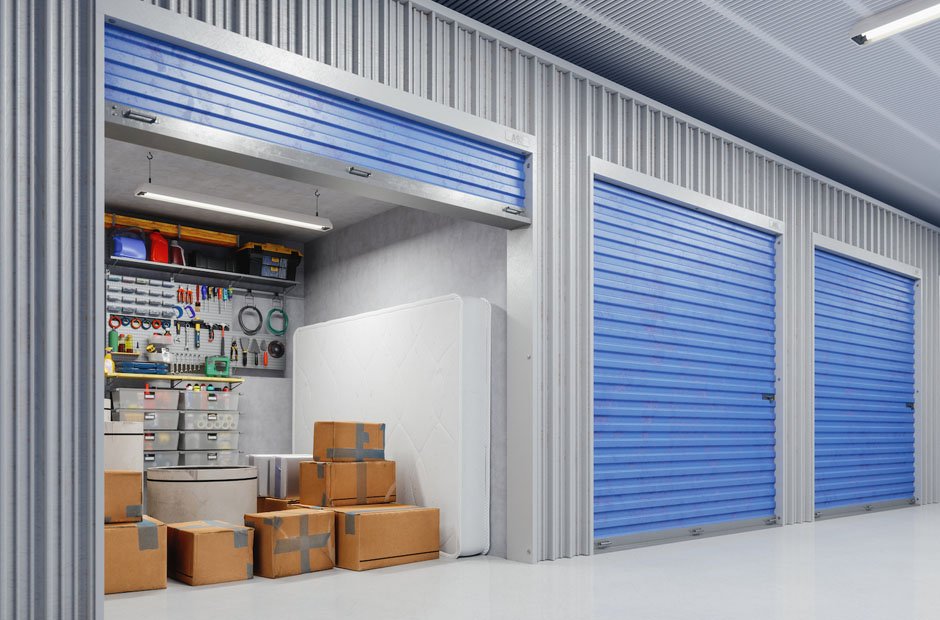Skip to the good bit
ToggleHome improvement projects can be exciting, but they often come with a lot of clutter and chaos, notes the Red Roof Rentals team. Historically, homeowners would cram tools, materials, and furniture into garages or spare rooms during renovations. However, this approach often leads to disorganization and frustration. Today, self storage has become a popular solution for keeping things tidy and accessible while improving your home. By storing your belongings offsite, you free up valuable space for work and protect your items from dust and damage. Organizing your storage unit properly is key to making the renovation process smoother, saving time and energy when you need to access materials or move things around. In this blog, we’ll explore how to effectively organize self storage for home improvement, ensuring your project runs as efficiently as possible from start to finish.
Choosing the Right Storage Unit
Selecting the right storage unit is a critical first step in organizing your home improvement project. You’ll need a unit that’s large enough to hold everything you plan to store, but also accessible enough to make it easy to retrieve tools, materials, or furniture as needed. For homeowners looking for reliable and secure options, advanced Maryland storage solutions crafted by NSA Storage offer the perfect combination of space and accessibility. These units are designed to accommodate everything from small tools to larger pieces of furniture, ensuring your belongings stay safe and organized throughout the renovation. Without the proper storage unit, you risk overcrowding and disorganization, which can slow down your project and lead to unnecessary stress.
Note: The first modern self-storage facility was opened in Texas in 1960, and the industry has been growing ever since!
Categorizing Your Items
Organizing your storage unit begins with properly categorizing your belongings. Sorting items into groups makes it easier to access them when needed and helps prevent damage or loss. Consider sorting items by function, size, or frequency of use.
Here are some useful categories to consider:
- Tools and hardware
- Furniture and large items
- Home décor and accessories
- Paints, sealants, and renovation materials
- Seasonal or less frequently used items
By categorizing your belongings, you’ll be able to easily locate what you need without digging through piles of unsorted boxes. It also ensures that items are stored in a way that protects them from damage during the renovation. Experts agree that organizing items into clear categories helps streamline the renovation process, making it more efficient and less stressful for homeowners. Proper categorization is a key step to a successful home improvement project.
Maximizing Space with Shelving
Maximizing the space in your storage unit is crucial, especially during home improvement projects when you have multiple items to store. One effective way to do this is by using shelving and racks. These not only keep your storage unit organized but also make the most of vertical space. By placing larger items on the ground and smaller, lighter items on shelves, you create a more structured and accessible storage system. This method keeps everything within easy reach while preventing overcrowding.
According to experts, “Proper use of vertical space in storage units ensures efficiency and prevents clutter from building up, making it easier to retrieve items quickly.”
Research:
A study by the National Association of Professional Organizers found that properly utilizing vertical storage space in self storage units increases overall organization efficiency by 30%. Shelving keeps frequently used items handy while ensuring less-used items are safely stored without being in the way. This approach helps you maintain an organized and functional space during your home improvement project.
Labeling for Easy Access
Labeling your boxes and containers is essential for staying organized and finding what you need quickly during your home improvement project. By clearly marking items, you won’t waste time digging through boxes.
Here are three steps to ensure effective labeling:
- Use large, clear labels on all sides of boxes.
- Include a brief description of the contents, such as “tools” or “paint supplies.”
- Group similar items and label them accordingly to create a cohesive system.
These steps will help you stay organized and make accessing materials or tools easier throughout the project. Proper labeling not only saves time but also reduces the stress of searching for items, keeping your renovation on track and your space well-organized.
Keeping Frequently Used Items Handy
During a home improvement project, organizing your storage unit so that frequently used items are easily accessible is crucial. One approach is to keep tools and materials you use daily near the front of the unit. This method saves time and effort, as you won’t have to dig through the entire unit to find what you need. However, this may require rearranging items frequently as your needs change. Another strategy is to create designated zones within the unit for specific tasks or project stages. This keeps everything organized, but it can take more time to set up initially.
Both approaches have their benefits, but the right one depends on the size and scope of your project. For more tips on organizing your home improvement process, check out the home improvement section for useful strategies to stay organized during renovation projects.
Maintaining an Organized Unit
Once your self storage unit is organized, maintaining it throughout the home improvement project is essential for keeping things efficient and stress-free. As your project progresses, you may need to rotate items or bring certain materials in and out. Regularly check your unit to ensure everything stays in its designated place and reorganize as needed to prevent clutter from building up. By keeping the unit tidy and updating your inventory as the project moves forward, you’ll always have easy access to what you need without wasting time searching for items. This ongoing maintenance ensures your storage space remains functional and continues to support your home improvement efforts.







